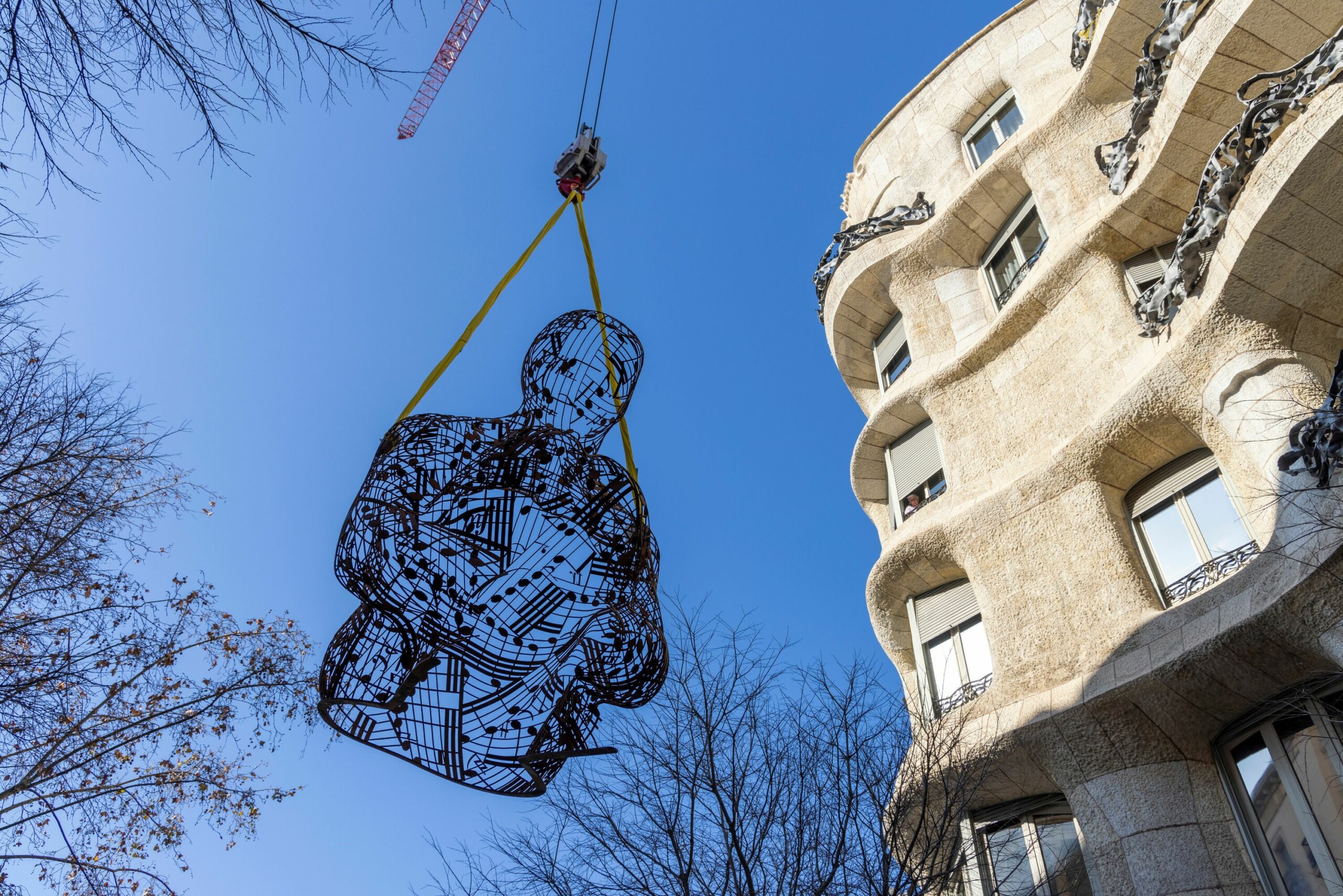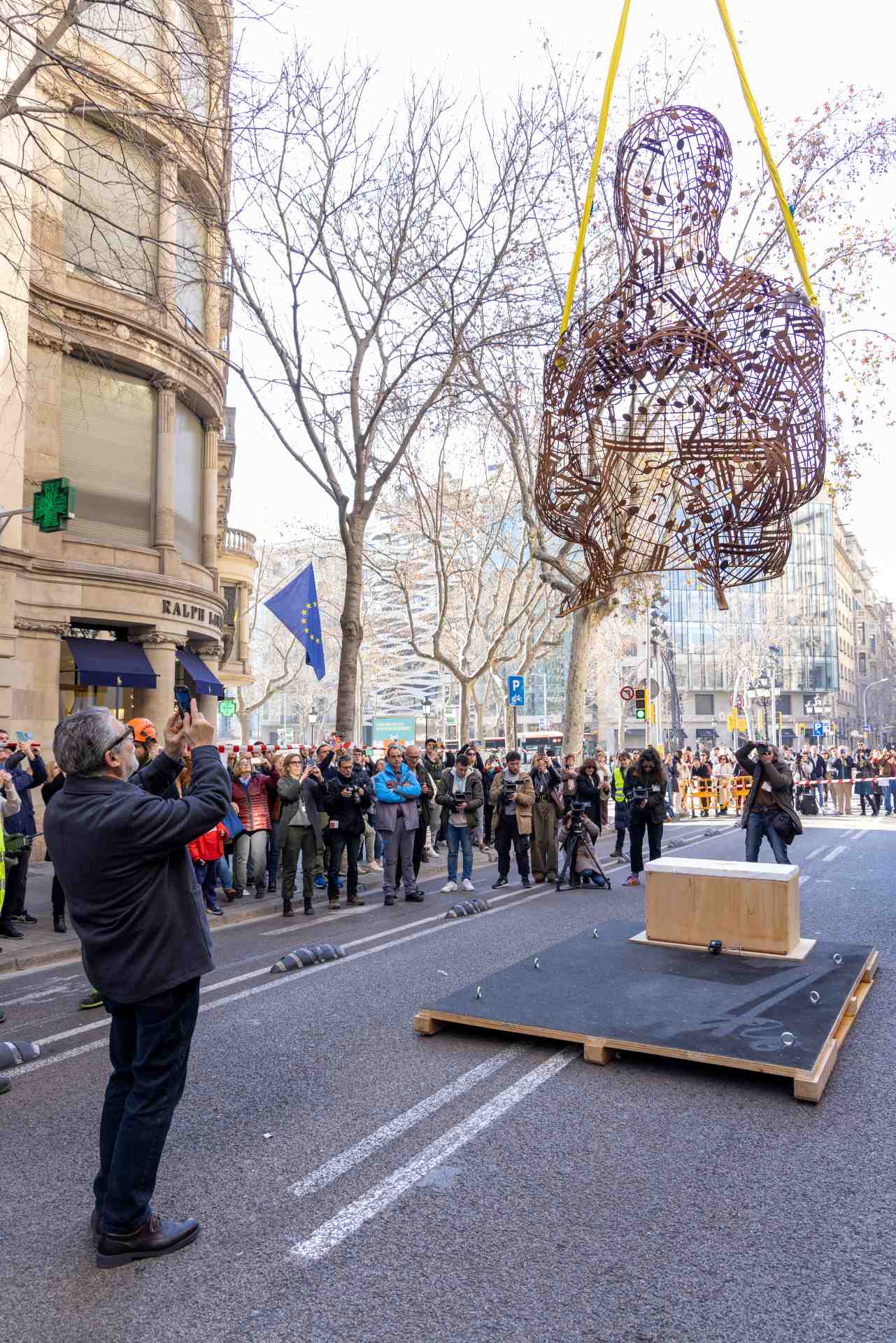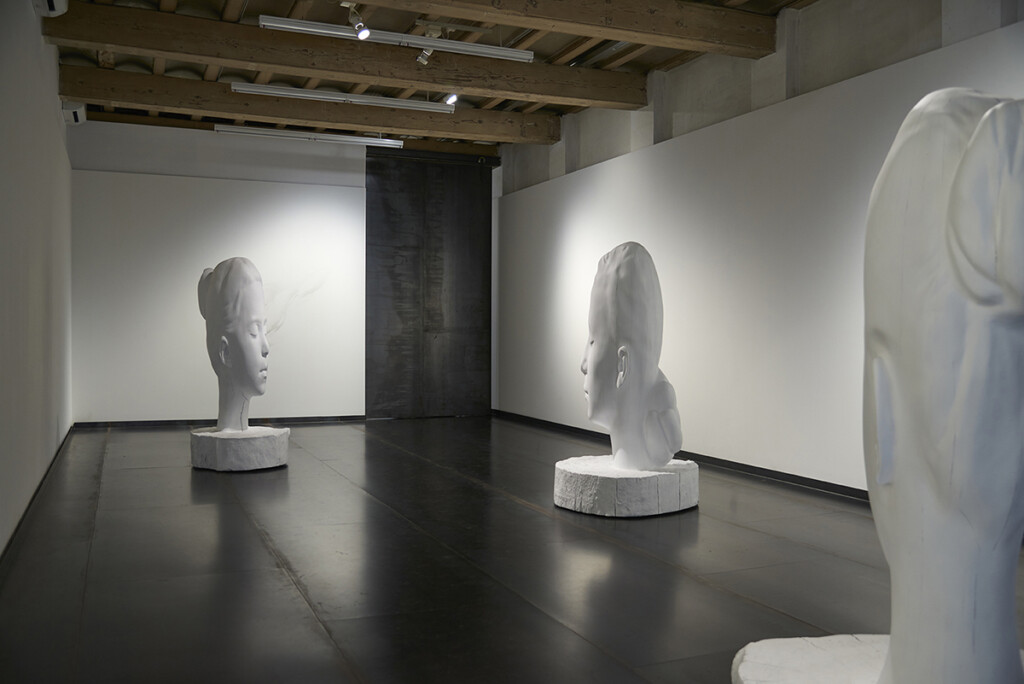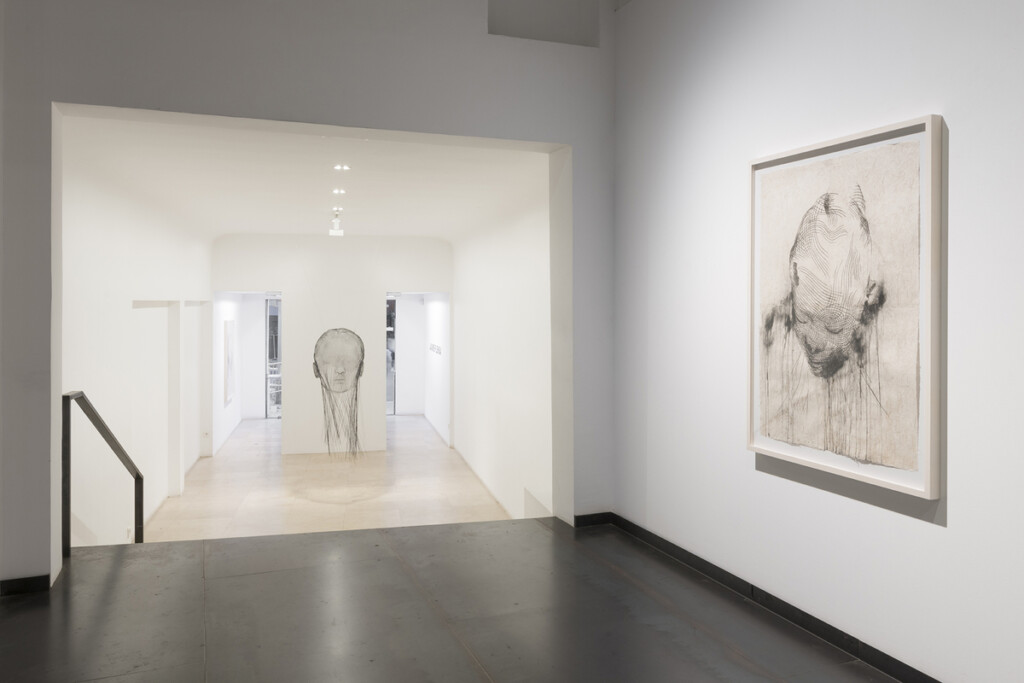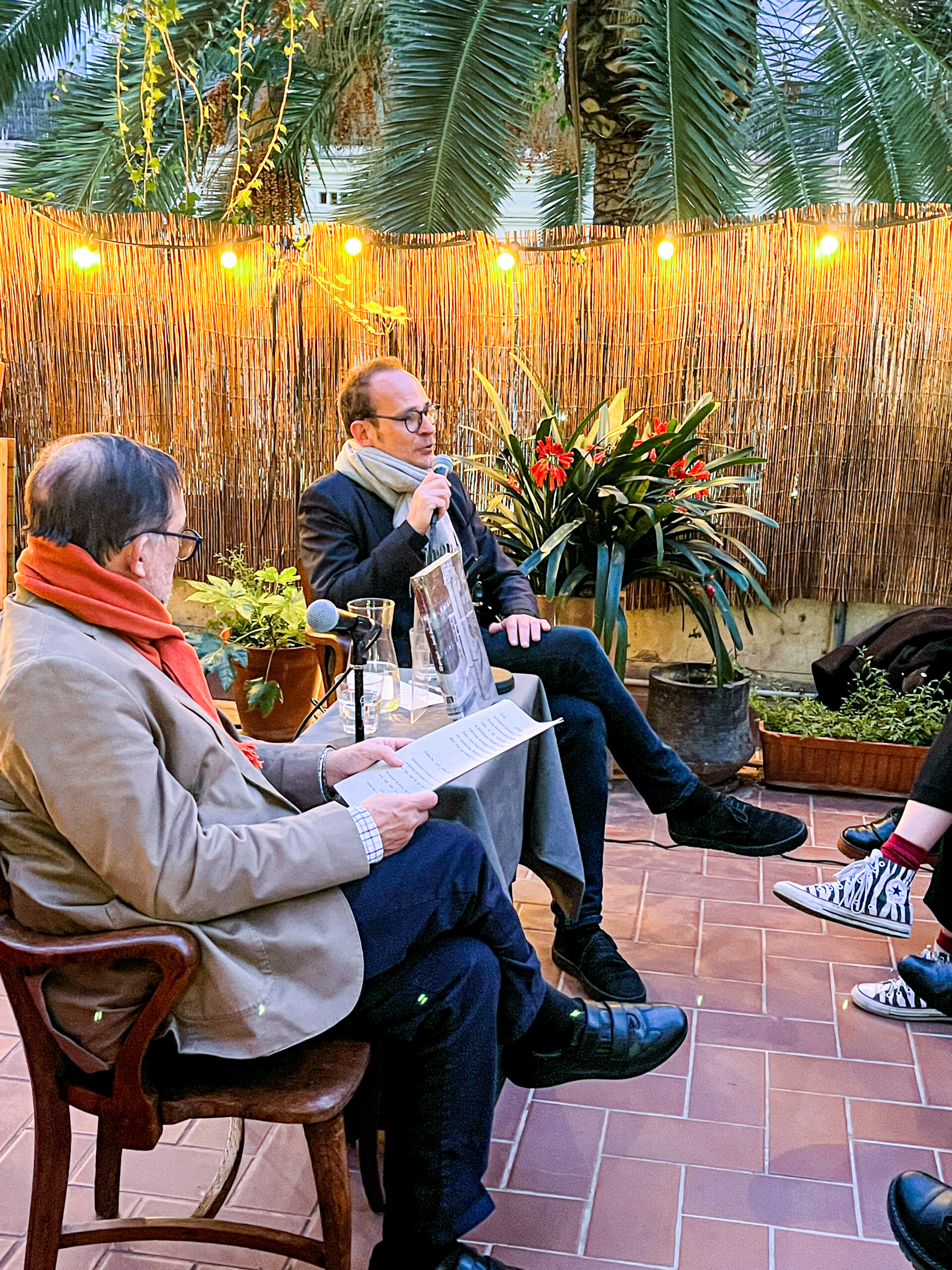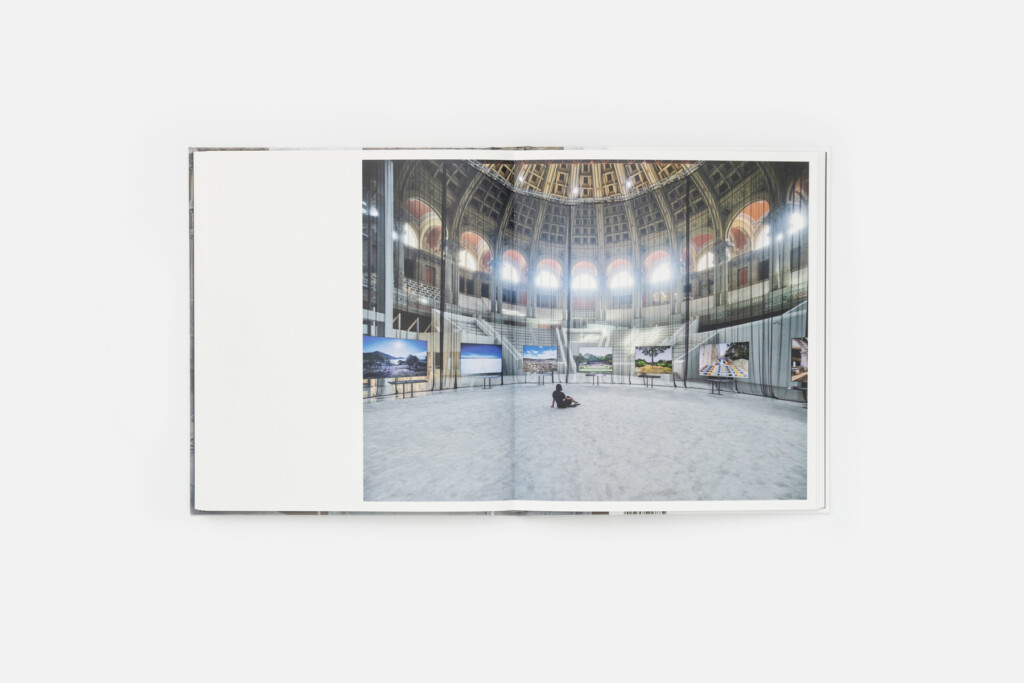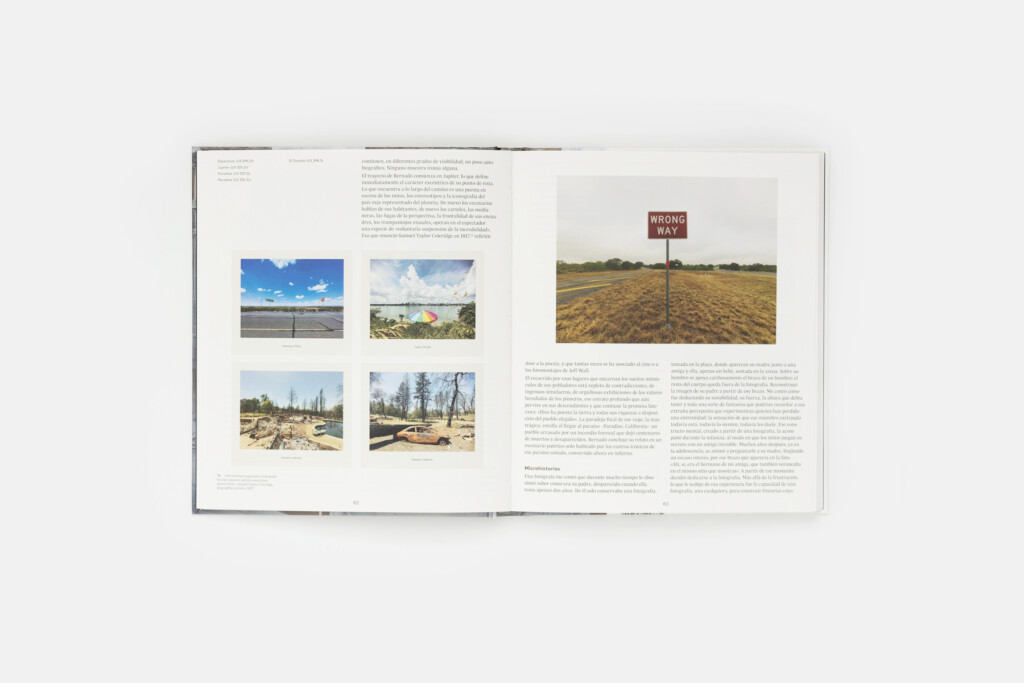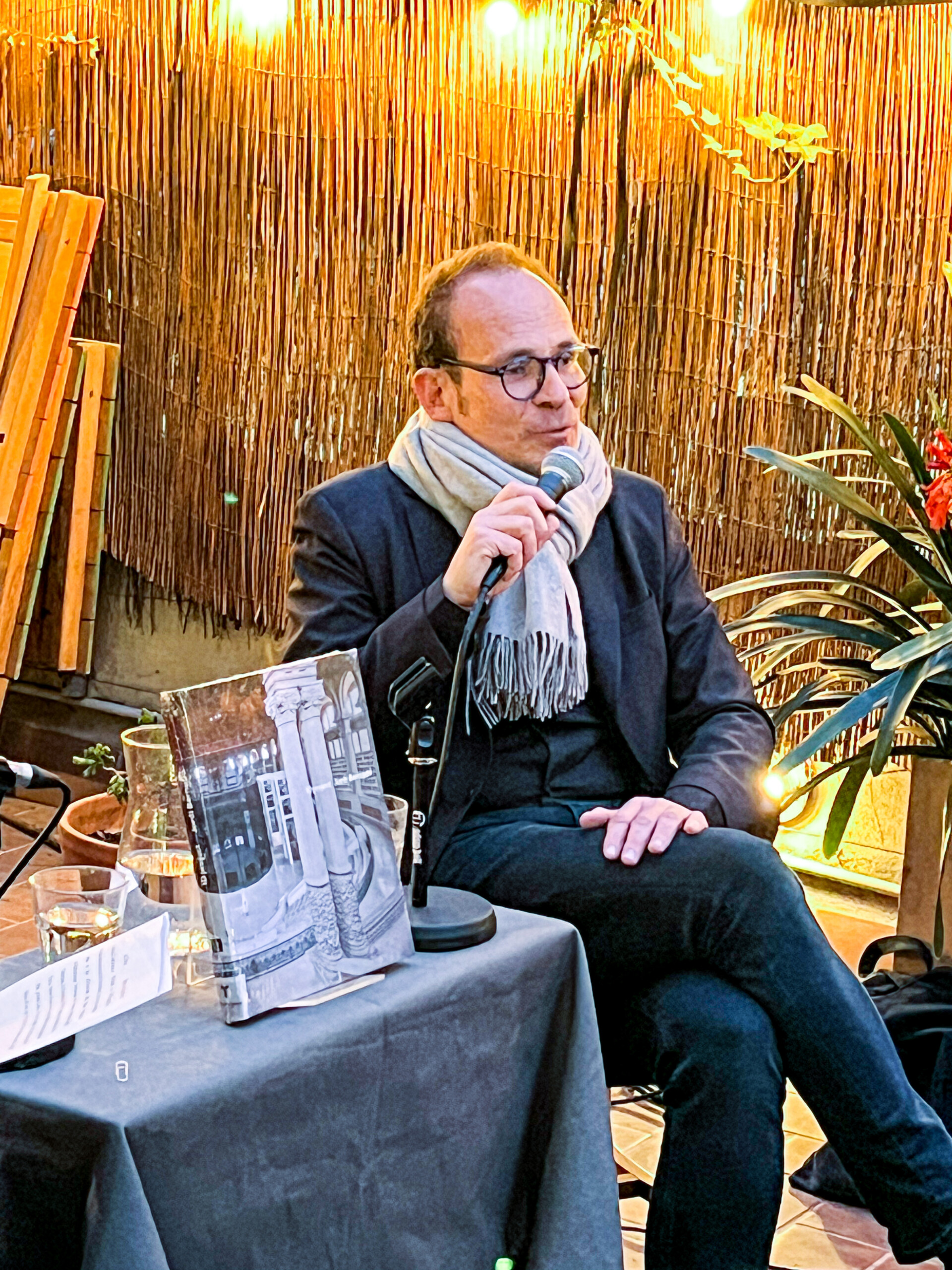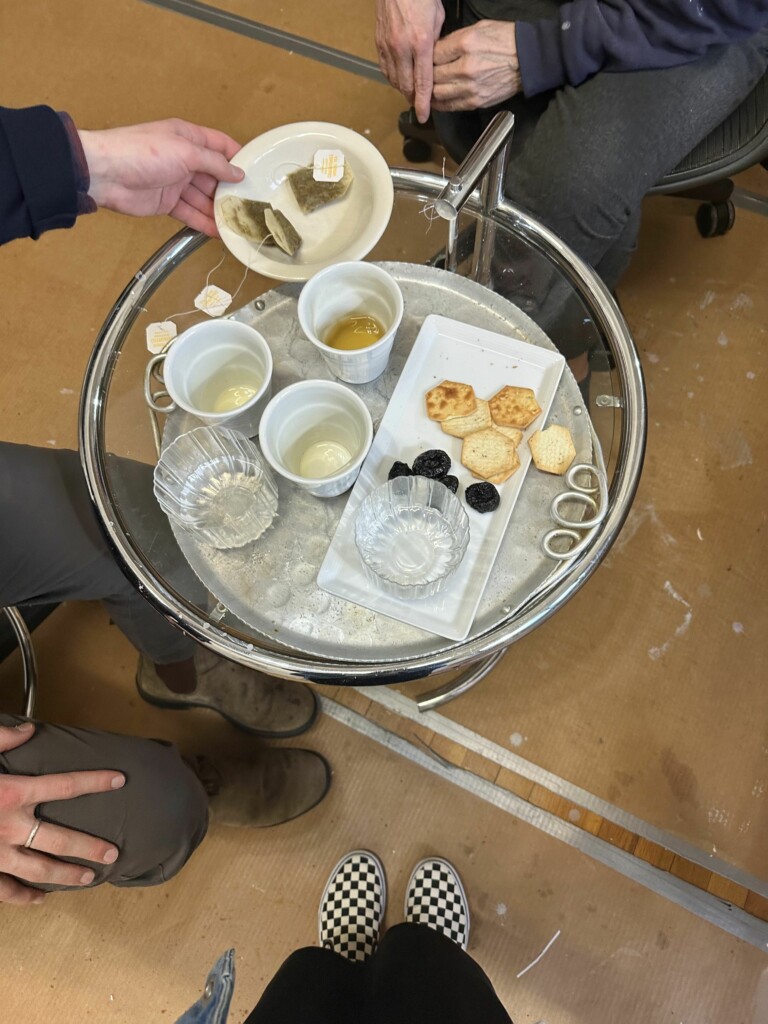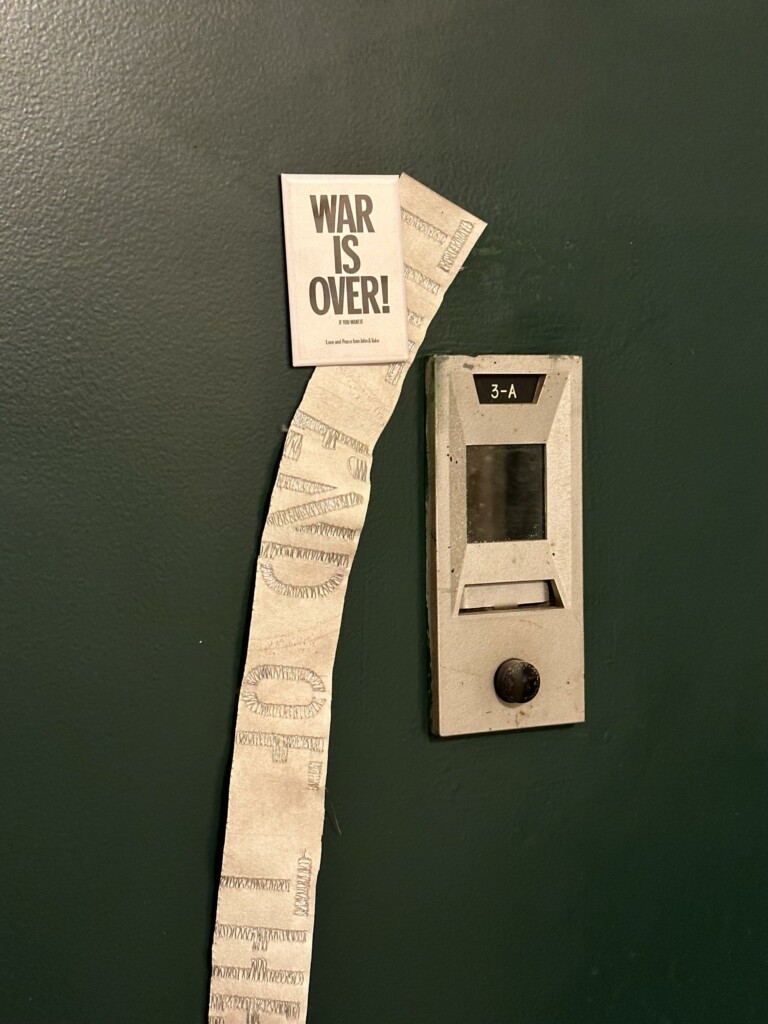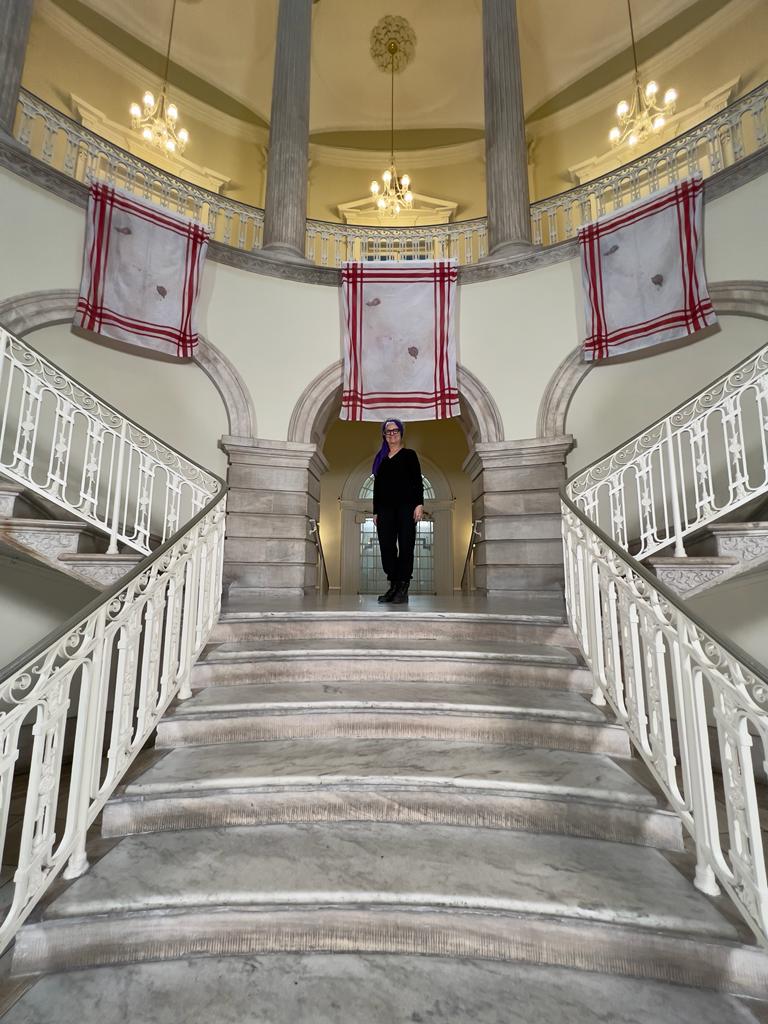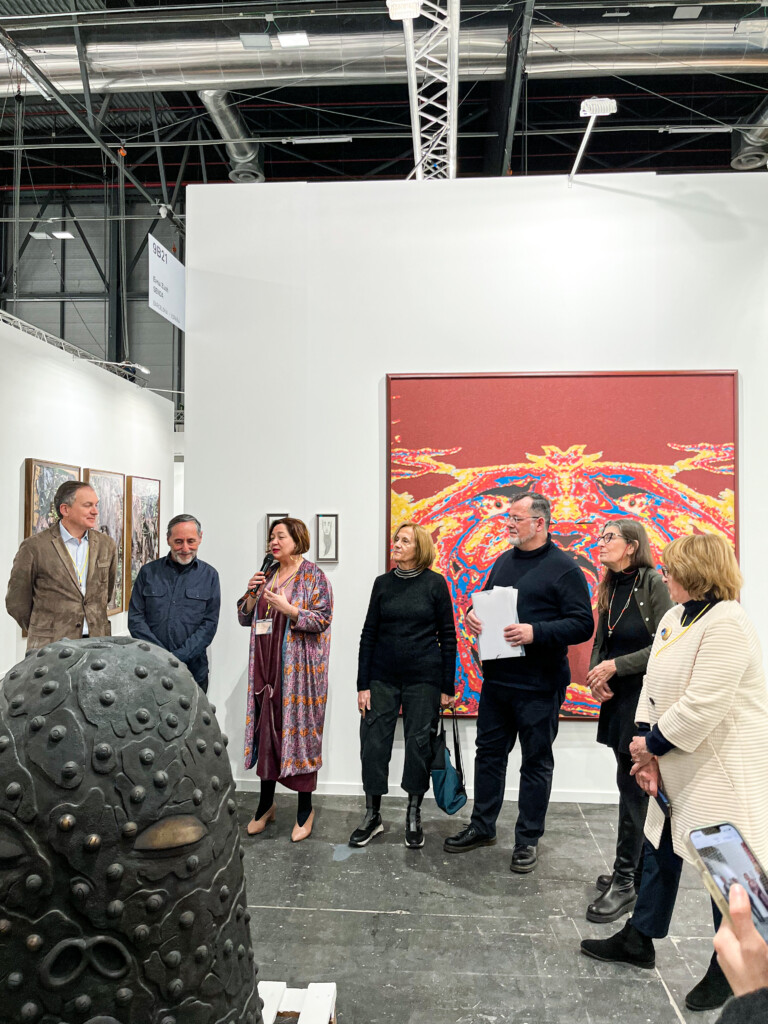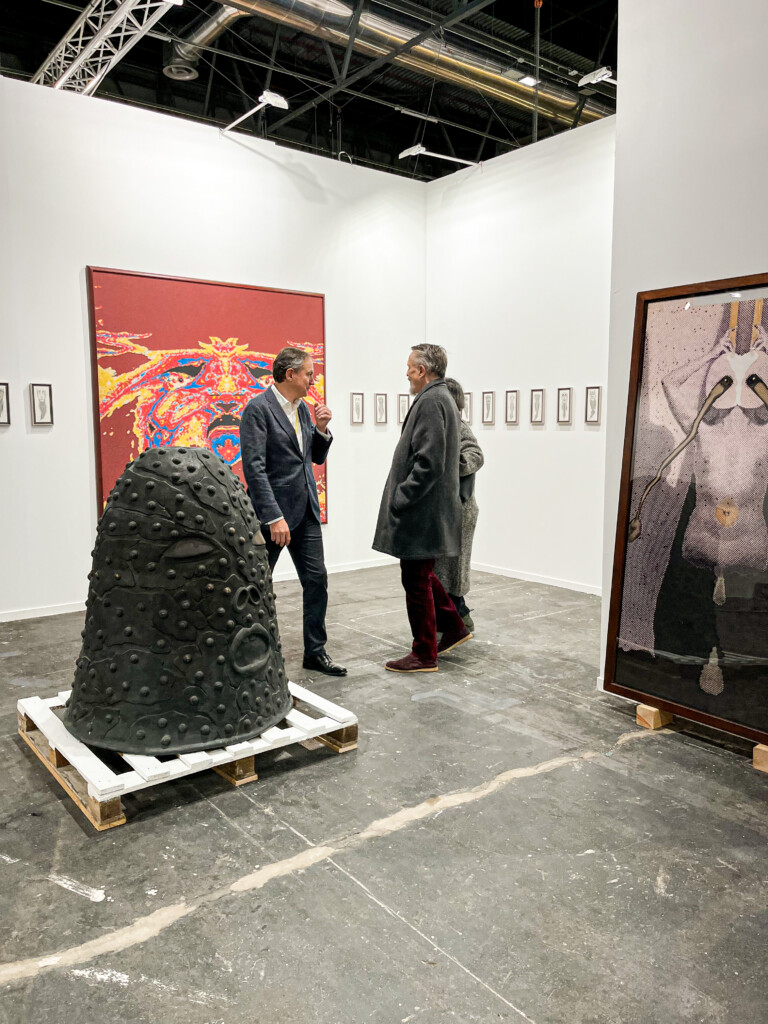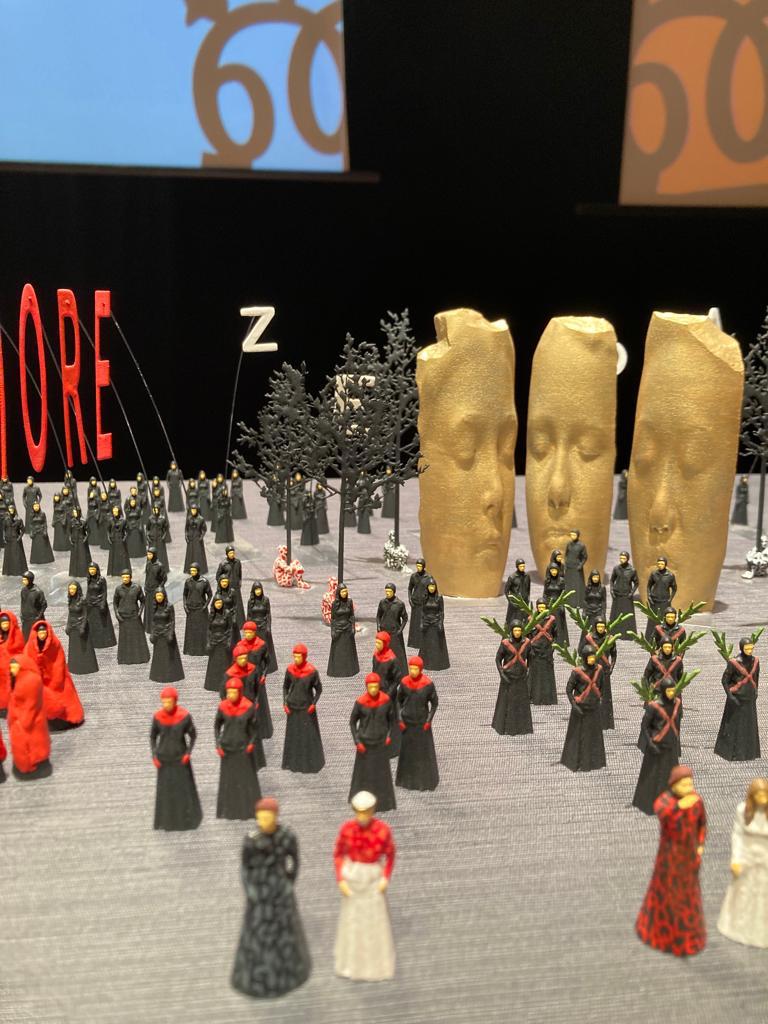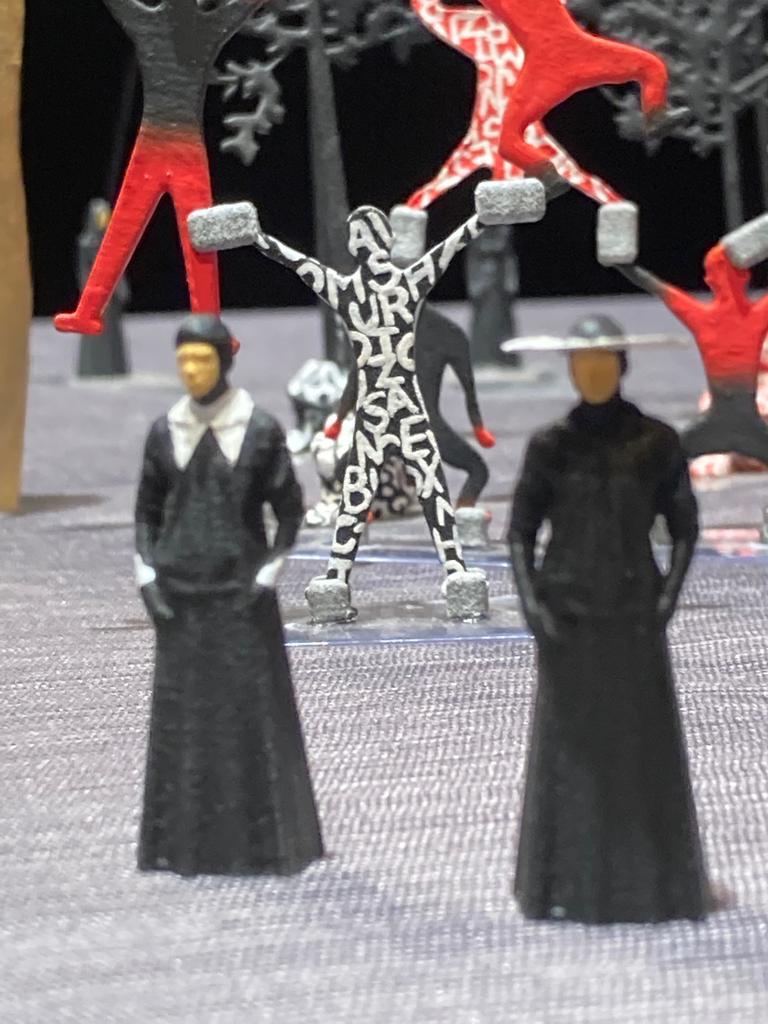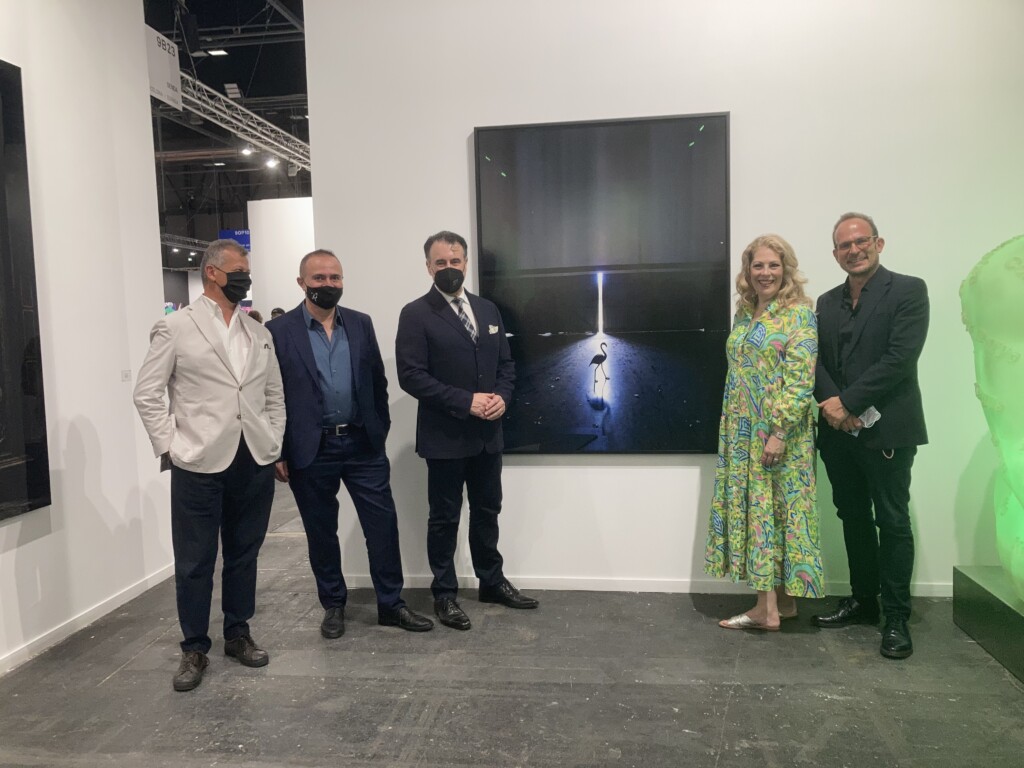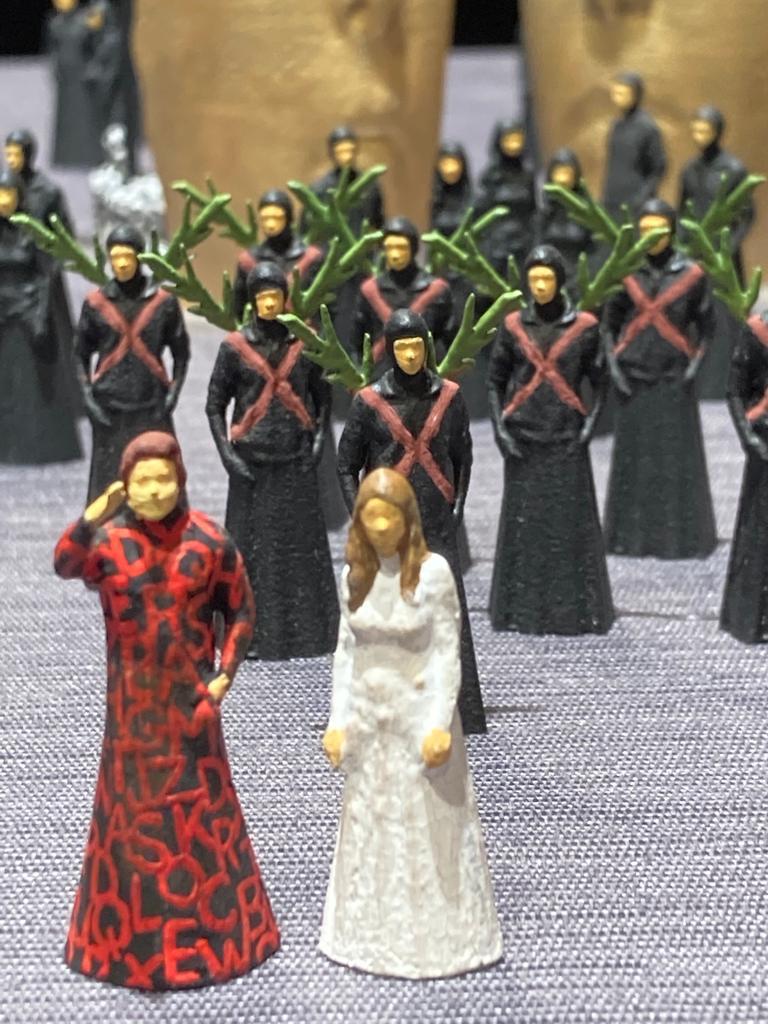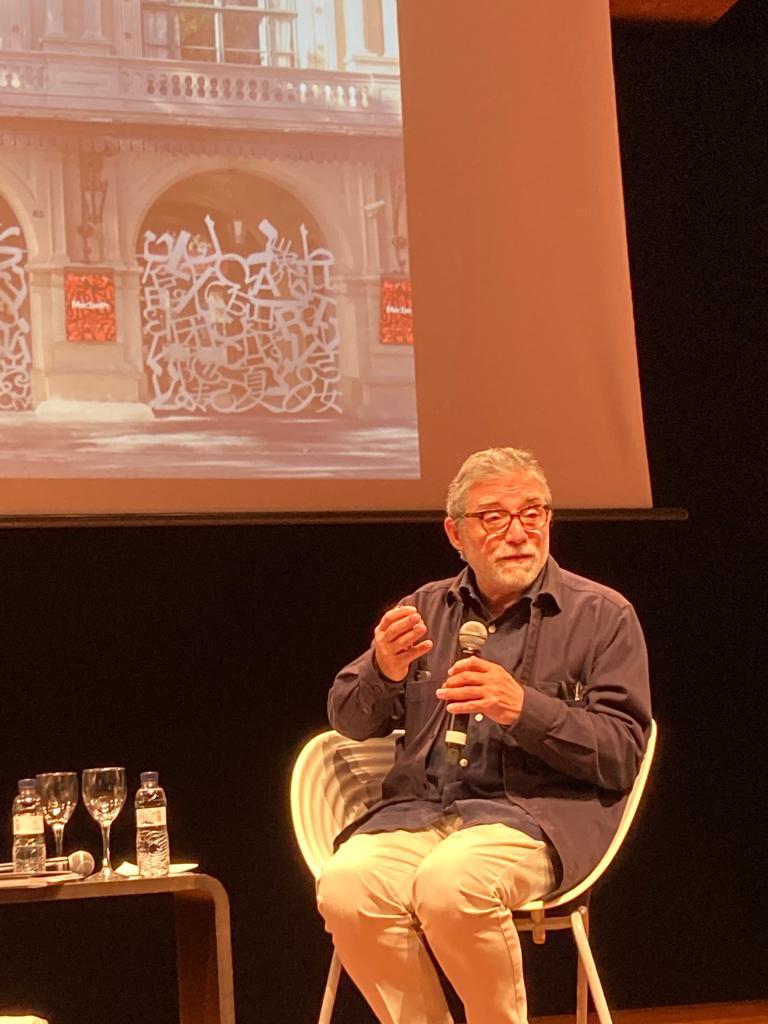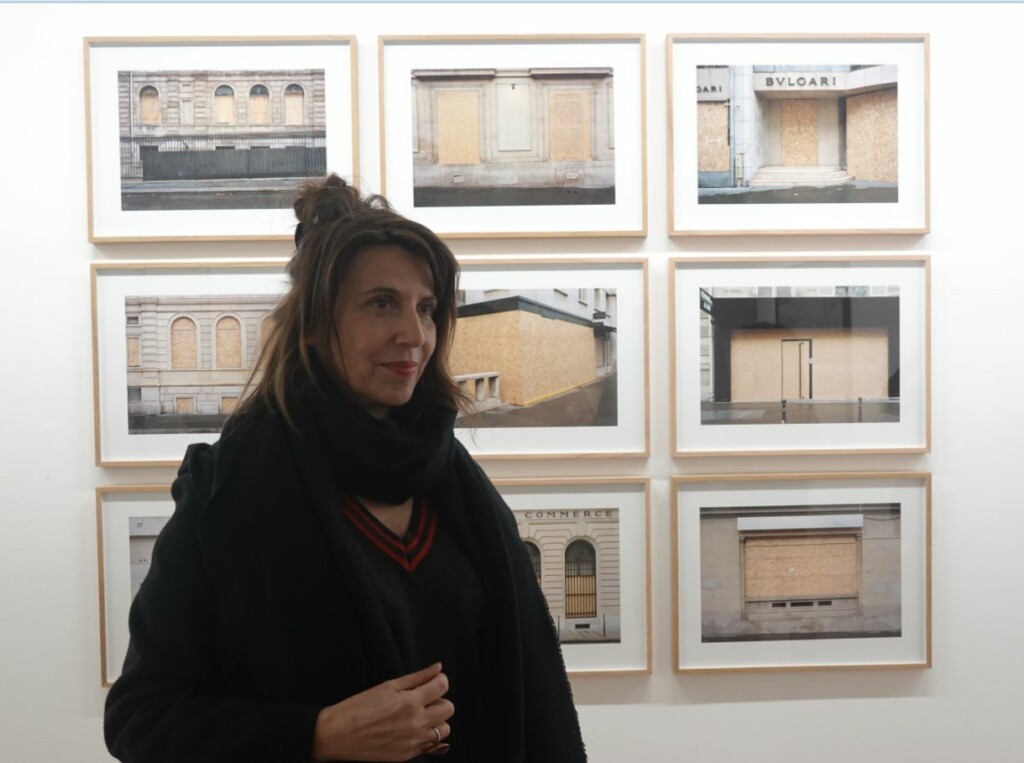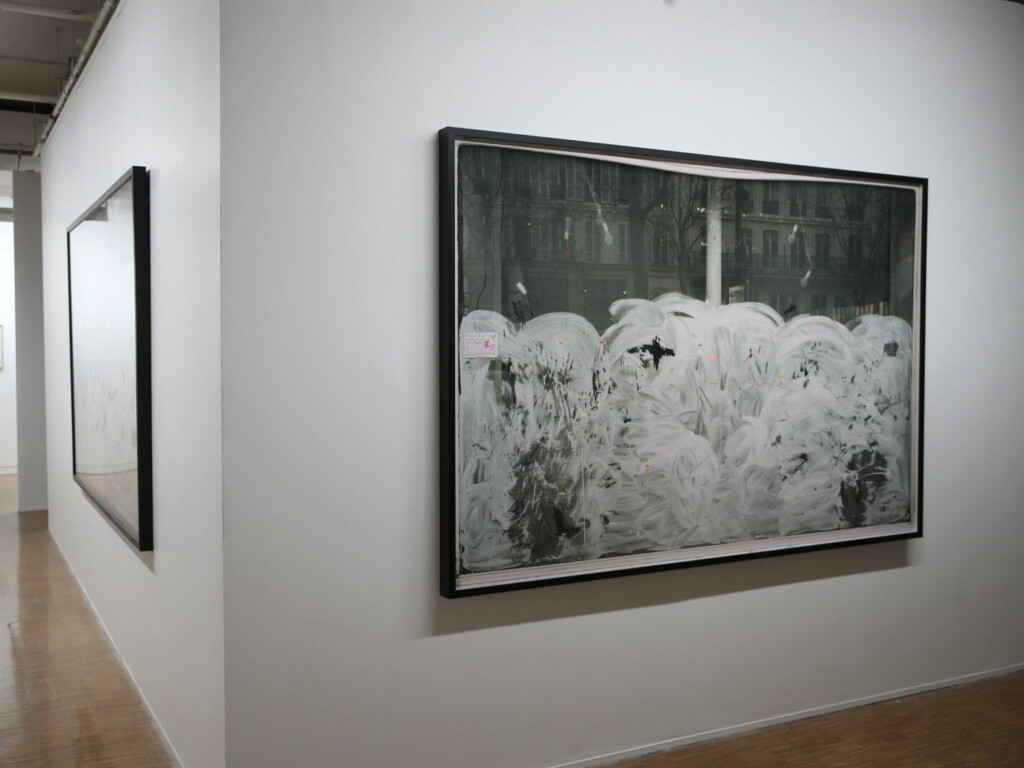An onironaut who makes his dreams tangible. In a few words, this is how we could define Gonzalo Guzmán, the artist from Madrid who bases his sculptural work on the oneiric study of his dreams. Guzmán trained as an industrial designer and, since the pandemic, has dedicated his time to the art of sculpture. During that period of social isolation, Gonzalo Guzmán began to experience lucid dreams, a state of momentary disconnection between body and mind in which the subject is aware that he is living a dream and can therefore control it. Since then, his artistic project has been growing and exploring new horizons.
Dreams, his object of study
It is when he closes his eyes and dreams that Guzmán finds the meaning and inspiration for his works. In his dreams, the artist interacts with megalithic metallic structures that give him a very deep sense of peace. Menhirs and dolmens that, although they look like abstract bodies, are figurative pieces because they copy what the artist sees in his dreams. Guzmán chooses stainless steel because he seeks to emulate the metallic material with which he interacts in his dreamlike journeys. In addition, for practicality, this type of metal is resistant to the exterior, which is essential in order to be faithful to what he had previously dreamed. Stainless steel is the ideal material for his structures, as it offers him the necessary technical and visual properties to build his pieces.
Guzmán’s dream ritual
Gonzalo Guzmán, in an interview for Metal magazine, explains the mental process he carries out to connect with his dreams. He talks about the state of “duermevela”, a state of disconnection where the body remains asleep, but the mind remains awake. As bodily movements and sensations are cancelled out, they intensify in the head, and that is when the dream adventure begins. The trick, according to Guzmán, is to have a clear objective when dreaming. “[…] it is easier to experience these dreams if you have a goal, if during the day you are motivated by thinking about having a lucid dream, and you set yourself something you would like to accomplish within the dream.”
In Gonzalo Guzmán‘s case, his goal when dreaming is to better understand the meaning of these structures he sees in his dreams and to interact with them again. His ritual begins at four in the morning at the sound of his alarm. The artist half wakes up and does a series of exercises in that drowsy state that make it easier for him to begin to experience lucid dreaming when he goes back to sleep.
Exhibitions and participations
Gonzalo Guzmán has exhibited his pieces in different parts of the world such as Germany, Switzerland, Italy and the United Kingdom, among many other places. His most recent solo show is the exhibition “Colisión” (2023) at Galeria SENDA, framed within the Art Nou festival, an emerging art festival in Barcelona and Hospitalet de Llobregat that offers the possibility for young national and international artists to establish their first professional relationships in the art market, galleries, self-managed spaces and institutions dedicated to emerging art. The central piece of the exhibition and the one that attracted the most attention was an installation composed of the representation of a three-metre stainless steel stalactite that was suspended from the ceiling of the gallery on a reflective surface. The reflection of the stalactite on the surface generated the optical illusion that there was also a second stalactite about to touch the suspended one. The strength of the composition lies in the closeness of an impossible collision, hence the name of the exhibition.
In the context of art fairs, Guzmán has participated in a couple so far this year. Firstly, his dreamlike works made a visit to ARCO Madrid along with other artists from the gallery in a leading art scene. In addition, recently, his pieces were also exhibited at the SENDA stand at the Art Brussels fair.
Dolmen_04 and its link with the Meeting of the Círculo de Economía
On the occasion of this year’s 39th Meeting of the Círculo de Economía, framed under the title “The world on trial. Strategies to boost productivity and well-being in times of change”, the work Dolmen_04 by Gonzalo Guzmán will have a special place at the Palau de Congressos de Catalunya.
This structure shares a close link with the theme of the symposia at this meeting. We often need to go back to our origins to see how far we have come. Raimon wrote that he who loses his origins loses his identity. Perhaps what he meant in this verse is that those who have abandoned their history are not capable of understanding their present in all its grandeur, nor will they be able to face the challenges of the future in all their complexity.
Dolmen_04 takes us from the origins of humanity to the most rabid present in fractions of a second. In the blink of an eye. The dolmen is a quantum object, which seems to be in two different spaces at the same time: physically planted in this meeting space and, with its infinite reflection, in our deepest vision of ourselves. And it is quantum also because it occupies two different places in space/time. Art challenges, as much or more than physics, our perception of the universe and is able to make us perceive an object, like this Dolmen_04, in two very different moments in the history of mankind.
A sample of these first and rudimentary architectural constructions that man built can be seen here today transformed into a modern object, without losing its prehistoric symbolism. We find it here, in a place where the most mundane humans reflect on the present and the future, and its vision challenges us and announces to us where we come from, lest by having our feet on the ground we lose our origins and forget that humanity, since its beginnings, has always wanted to rise above the most mundane reality, and find, wherever it is, a spiritual meaning in the routine moments that we live every day.
That is why this dolmen of the 21st century takes us back to our ancestors and wants to remind all of us gathered here that outside, not so far from here, there is another world. A world created, among others, by hundreds of millions of years of artists, writers, sculptors, musicians, etc., and also by ordinary people, the common citizen who goes to work every day and who, in some way, has to be present in our discussions. Because, in the end, we all have to work for the common man, for the human race in its entirety. This dolmen transports us to the millenary history of the human race, of ordinary people.
A dolmen has landed in these days as an artist’s piece that summarises this journey from antiquity to modernity in tenths of a second and reminds us that this journey would not have been possible without the people in the street, without those who work and produce, who, in short, must always be the main actor in human progress. Let’s keep him here, let’s see him, and let’s never forget why he is here. His work, his production and his creativity is our future.
A small sample of his dreams
Here is a small selection of works by Gonzalo Guzmán that evoke those induced dreams that the artist creates from scratch in his mind.

























































































